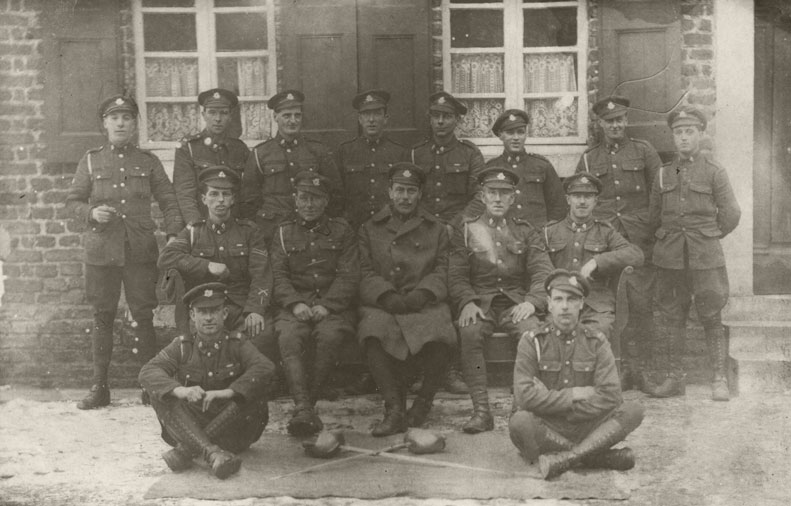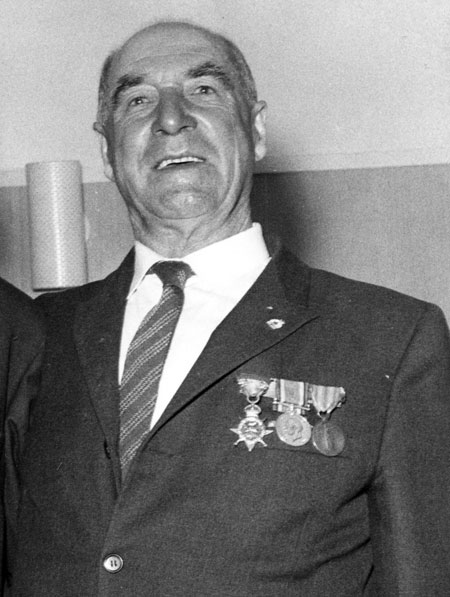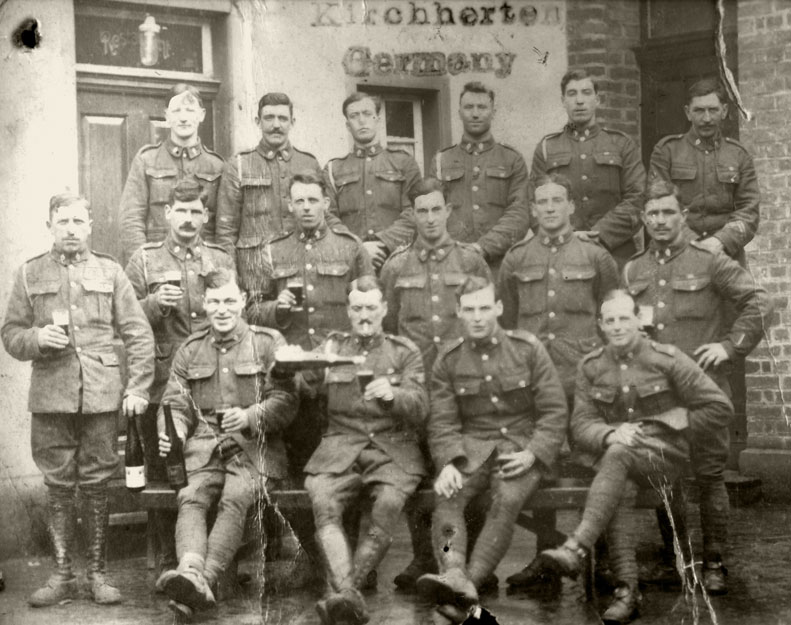Shoeing Smith William James Knox
Knox (back row second from right) with pals in Germany in the latter half of 1919
William James Knox was born (named Albert James) on 7 March 1894 at Largy, near Enniskillen, County Fermanagh, third of nine children of farmer Thompson Knox and his wife Margaret (nee Armstrong).
He grew up with his family at Largy and by 1911 was working as a blacksmith.
William enlisted in the North Irish Horse with his brother Freddy at Tempo at the end of July 1912 (No.723 – later Corps of Hussars No.71084).
On 20 August 1914 he embarked for France as part of C Squadron, seeing action in the Retreat from Mons and Advance to the Aisne.
In June 1916 C Squadron joined with F Squadron and the 6th (Inniskilling) Dragoons Service Squadron to form the 2nd North Irish Horse Regiment. A year later the regiment was dismounted and most of its officers and men were transferred to the 9th Battalion, Royal Irish Fusiliers.
Whether Knox was with C Squadron and the 2nd Regiment throughout this period is unknown, but he was not one of those transferred to the 9th Battalion. He had probably returned to the North Irish Horse reserve at Antrim sick, wounded or injured at some point beforehand. He was then sent back to France as a reinforcement for the 1st North Irish Horse Regiment.
The 1st Regiment was dismounted in March 1918 and converted to a corps cyclist regiment. It saw significant action during the year, particularly on reconnaissance and advance guard work for V Corps during the Advance to Victory offensive from August to November.
During 1919 Knox served in Germany as part of the Army of Occupation, before returning to the United Kingdom for demobilisation.
After the war he married and farmed near Irvinestown, County Fermanagh before emigrating with his young family to Prince Edward Island, Canada, in 1927.
He died on 25 February 1975.
William's brother Frederick Knox also served in the North Irish Horse. Another brother, Thompson Knox, served in the 2nd and 7/8 Battalions, Royal Inniskilling Fusiliers (No.28890), and was killed in action on 21 March 1918.


Another image from Germany (Knox at rear far left). Note the crossed swords.

I am grateful to Edwin Knox for making available these pictures of his Grandfather.

